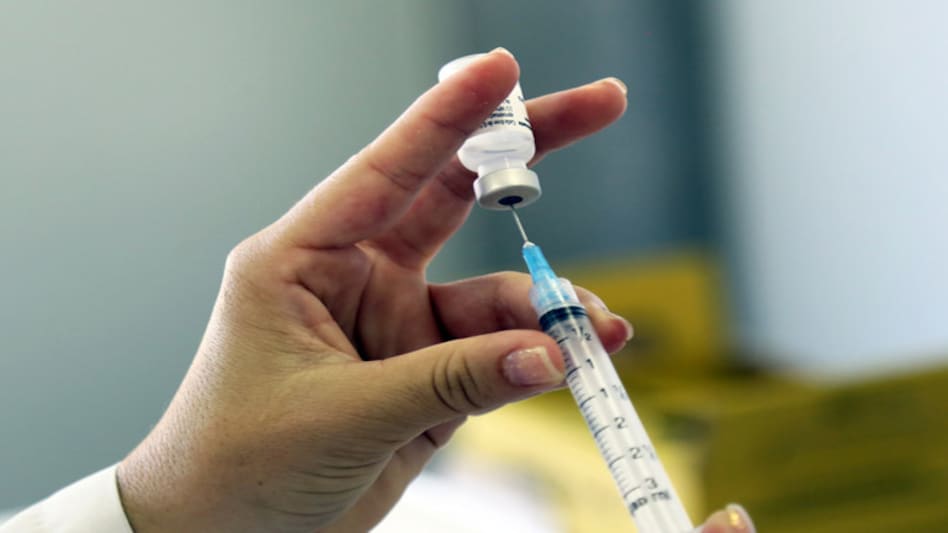 Currently, 25 countries with the most advanced logistics systems, are home to just one third of the world population
Currently, 25 countries with the most advanced logistics systems, are home to just one third of the world population  Currently, 25 countries with the most advanced logistics systems, are home to just one third of the world population
Currently, 25 countries with the most advanced logistics systems, are home to just one third of the world population Key Highlights
With nearly 250 COVID-19 vaccines under development across seven different technology platforms, it will be a big logistical challenge to transport over 10 billion doses, a white paper brought out by logistics specialist DHL, with McKinsey & Company as analytics partner, has said.
Noting that conventionally vaccines are kept at 2-8 degrees Celsius, stringent temperature requirements (up to -80 degrees Celsius) are likely to be imposed for the novel and complex vaccines to ensure that their efficacy is maintained during transportation and warehousing. This poses new logistics challenges to the existing global medical supply chain. To provide global coverage of COVID-19 vaccines, up to 200,000 pallet shipments and 15 million deliveries in cooling boxes as well as 15,000 flights will be required across various supply chain set-ups in the next two years.
About 2,000 million doses of protein sub-unit vaccines, 100 million doses of VLP platform vaccines, 200-220 million doses of inactivated virus vaccines, one million doses of DNA vaccines and 4,000 million doses of viral vector vaccine production capacities have been announced for 2021, which may require stringent distribution temperature of 0 to -10 degrees Celsius. It is also expected that 3,300 million doses of the RNA vaccine may require up to -70 degrees Celsius stringent distribution temperature. Potential bottlenecks along the key supply chain can happen in intermediate transport, intercontinental shipment, warehousing, downstream distribution and final short-term storage at the point of use.
Given that temperature requirements are likely to be the main hurdle, regions with particularly warm climate and those with limited cold-chain logistics infrastructure will face the biggest challenge. Currently, 25 countries with the most advanced logistics systems, are home to just one-third of the world population. Large parts of Africa, South America and Asia could not be readily supplied at scale due to lack of cold-chain logistics capacity suitable for life science products. Governments and NGOs would need to implement special measures to ensure vaccine distribution. Capacity would have to be increased and scaled in order to reach the global population.
Developing and disseminating a clear and pre-defined emergency response plan, building a partnership network of both public-private and public-public partnerships, identifying and ensuring access to required physical logistics infrastructure, establishing IT-enabled supply chain transparency and creating organisational structures and allocating resources to institutionalise and coordinate the entire response management including plan, partners, infrastructure and IT are solutions to overcome the challenges, said the white paper.
For demand identification and forecasting, some crucial steps such as identifying hotspots and forecasting demand based on infection rate have to be taken. For sourcing, governments can prepare well in advance by creating supplier lists (long and short lists) based on specific criteria for both product suppliers and logistics providers. In the area of procurement, governments should create a safety stock of critical supplies in advance to ensure self-sufficiency in the event of a supply chain collapse. In addition, pre-negotiated prices as well as secured volumes can help improve supply chain reliability and cost volatility. For inbound logistics and distribution, governments can avoid many common problems by selecting a logistics partner in advance, suggested the study.
Also Read: GDP CONTROVERSY: At -75% 'annualised' GDP, India still the worst performer
Also Read: Hacking of PM Modi's personal website's Twitter handle not related to earlier attacks
Also Read: JEE, NEET Exams to go ahead, Supreme Court rejects states' plea to review order
Copyright©2025 Living Media India Limited. For reprint rights: Syndications Today